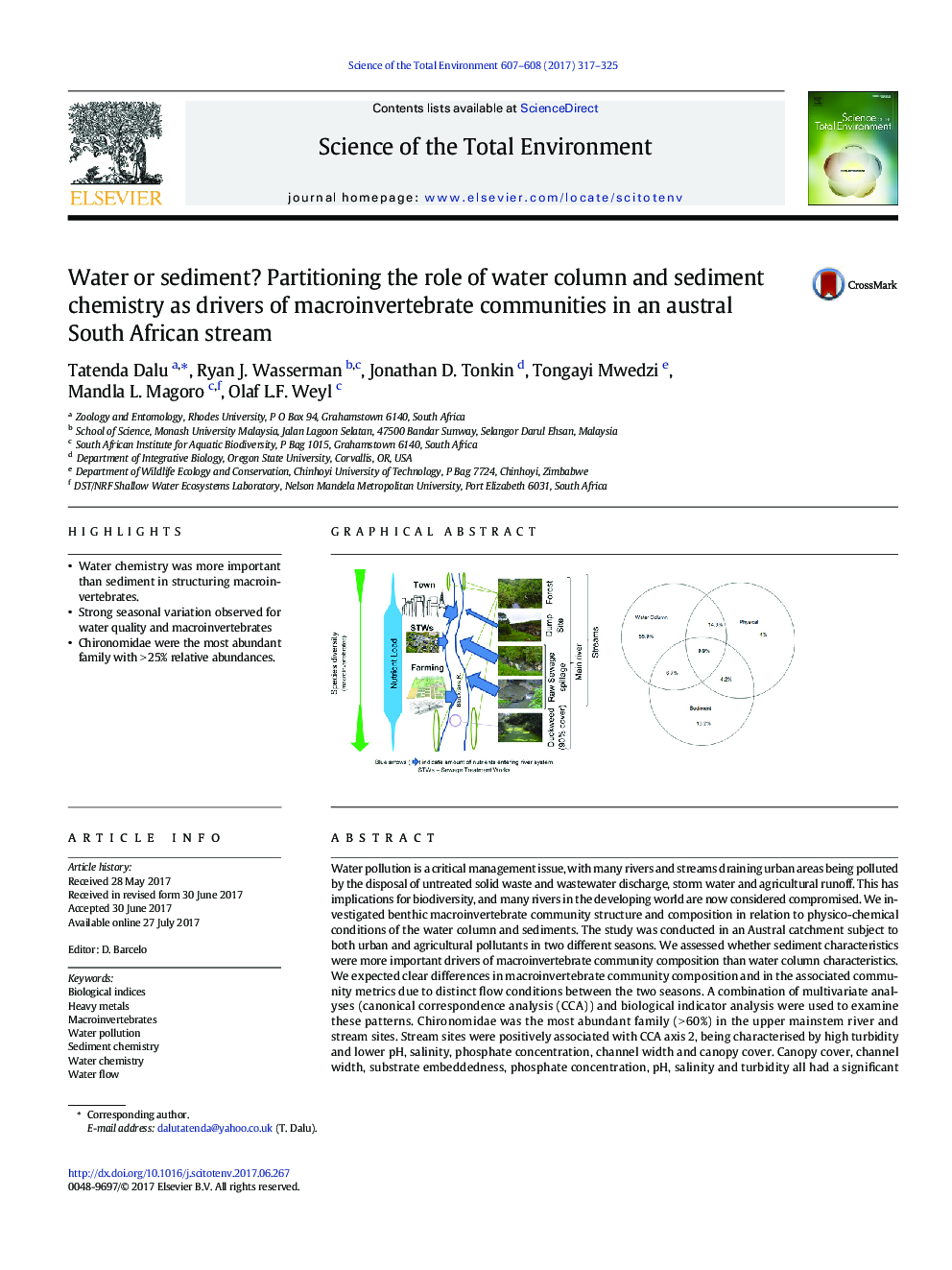| Article ID | Journal | Published Year | Pages | File Type |
|---|---|---|---|---|
| 5749990 | Science of The Total Environment | 2017 | 9 Pages |
â¢Water chemistry was more important than sediment in structuring macroinvertebrates.â¢Strong seasonal variation observed for water quality and macroinvertebratesâ¢Chironomidae were the most abundant family with > 25% relative abundances.
Water pollution is a critical management issue, with many rivers and streams draining urban areas being polluted by the disposal of untreated solid waste and wastewater discharge, storm water and agricultural runoff. This has implications for biodiversity, and many rivers in the developing world are now considered compromised. We investigated benthic macroinvertebrate community structure and composition in relation to physico-chemical conditions of the water column and sediments. The study was conducted in an Austral catchment subject to both urban and agricultural pollutants in two different seasons. We assessed whether sediment characteristics were more important drivers of macroinvertebrate community composition than water column characteristics. We expected clear differences in macroinvertebrate community composition and in the associated community metrics due to distinct flow conditions between the two seasons. A combination of multivariate analyses (canonical correspondence analysis (CCA)) and biological indicator analysis were used to examine these patterns. Chironomidae was the most abundant family (>Â 60%) in the upper mainstem river and stream sites. Stream sites were positively associated with CCA axis 2, being characterised by high turbidity and lower pH, salinity, phosphate concentration, channel width and canopy cover. Canopy cover, channel width, substrate embeddedness, phosphate concentration, pH, salinity and turbidity all had a significant effect on macroinvertebrate community composition. Using CCA variation partitioning, water quality was, however, a better predictor of benthic macroinvertebrate composition than sediment chemical conditions. Furthermore, our results suggest that seasonality had little effect on structuring benthic macroinvertebrate communities in this south-eastern zone of South Africa, despite clear changes in sediment chemistry. This likely reflects the relative lack of major variability in water chemistry compared to sediment chemistry between seasons and the relatively muted variability in precipitation between seasons than the more classic Austral temperate climates.
Graphical abstractDownload high-res image (297KB)Download full-size image
